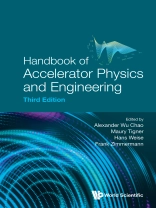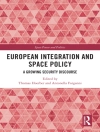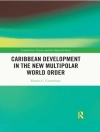Edited by internationally recognized authorities in the field, this expanded and updated new edition of the bestselling Handbook, containing many new articles, is aimed at the design and operation of modern particle accelerators. It is intended as a vade mecum for professional engineers and physicists engaged in these subjects. With a collection of more than 2000 equations, 300 illustrations and 500 graphs and tables, here one will find, in addition to common formulae of previous compilations, hard to find, specialized formulae, recipes and material data pooled from the lifetime experience of many of the world’s most able practioners of the art and science of accelerators.
The seven chapters include both theoretical and practical matters as well as an extensive glossary of accelerator types. Chapters on beam dynamics and electromagnetic and nuclear interactions deal with linear and nonlinear single particle and collective effects including spin motion, beam-environment, beam-beam, beam-electron, beam-ion and intrabeam interactions. The impedance concept and related calculations are dealt with at length as are the instabilities due to the various interactions mentioned. A chapter on operational considerations including discussions on the assessment and correction of orbit and optics errors, realtime feedbacks, generation of short photon pulses, bunch compression, phase-space exchange, tuning of normal and superconducting linacs, energy recovery linacs, free electron lasers, cryogenic vacuum systems, steady state microbuching, cooling, space-charge compensation, brightness of light sources, collider luminosity optimization and collision schemes, machine learning, multiple frequency rf systems, FEL seeding, ultrafast electron diffraction, and Gamma Factory. Chapters on mechanical and electrical considerations present material data and important aspects of component design including heat transfer and refrigeration. Hardware systems for particle sources, feedback systems, confinement, including undulators, and acceleration (both normal and superconducting) receive detailed treatment in a sub-systems chapter, beam measurement and apparatus being treated therein as well.
A detailed name and subject index is provided together with reliable references to the literature where the most detailed information available on all subjects treated can be found.
Contents:
- Preface
- Acknowledgments
- Introduction
- Beam Dynamics
- Electromagnetic and Nuclear Interactions
- Operational and Design Considerations
- Mechanical Considerations
- Electrical Considerations
- Subsystems
- Author Index
- Subject Index
Readership: Physicists, engineers and practitioners in accelerator science.
This Handbook is an essential tool for any practicing accelerator physicists and engineer. The editors have made use of their large contact base around the world to have the dominant experts in each subtopic write insightful summaries, including the most relevant references. For each topic, the reader therefore receives a truly expert overview and is lead to most relevant literature. A more concise accumulation of particle-accelerator knowledge can hardly be imagined. – Georg H Hoffstaetter de Torquat, Professor of Physics Cornell University and Brookhaven National Laboratory Director of ERL / EIC collaboration, Cornell PI CBETAFellow of the German National Merit Foundation and APS
In its 3rd Edition, the Handbook of Accelerator Physics and Engineering provides a truly impressive collection of concepts, equations and essential scalings for the design and operation of accelerators. The book provides an excellent reference for students and professionals alike. The book features very concise explanations and discussions of all essential equations and concepts related to accelerators. It is therefore the ideal and indispensable tool for anybody working on the design or operation of accelerators and who wants to quickly access a reliable summery and reference. Furthermore, any reader who needs more in-depth information on a given topic, finds for each section in the book a collection of excellent articles and presentations that provide more detailed information and a path forward to a more general research into the topic at hand. – Oliver Bruning CERN, Accelerator and Technology Sector, Directors Office Project Leader of the HL-LHC upgrade project
Reviews of the 2nd Edition: The handbook continues to be an outstanding reference and provides almost all the answers and clues for anyone working with particle accelerators, be they medical, nuclear, high energy colliders or synchrotron radiation light sources. – Australian Physics
This book is an outstanding collection of essential information about accelerator physics and design. For those working with accelerators, it would be a very handy source of essential practical information on the design and operation of linear and circular accelerators for high-energy physics and synchrotron radiation. – IEEE Electrical Insulation Magazine












